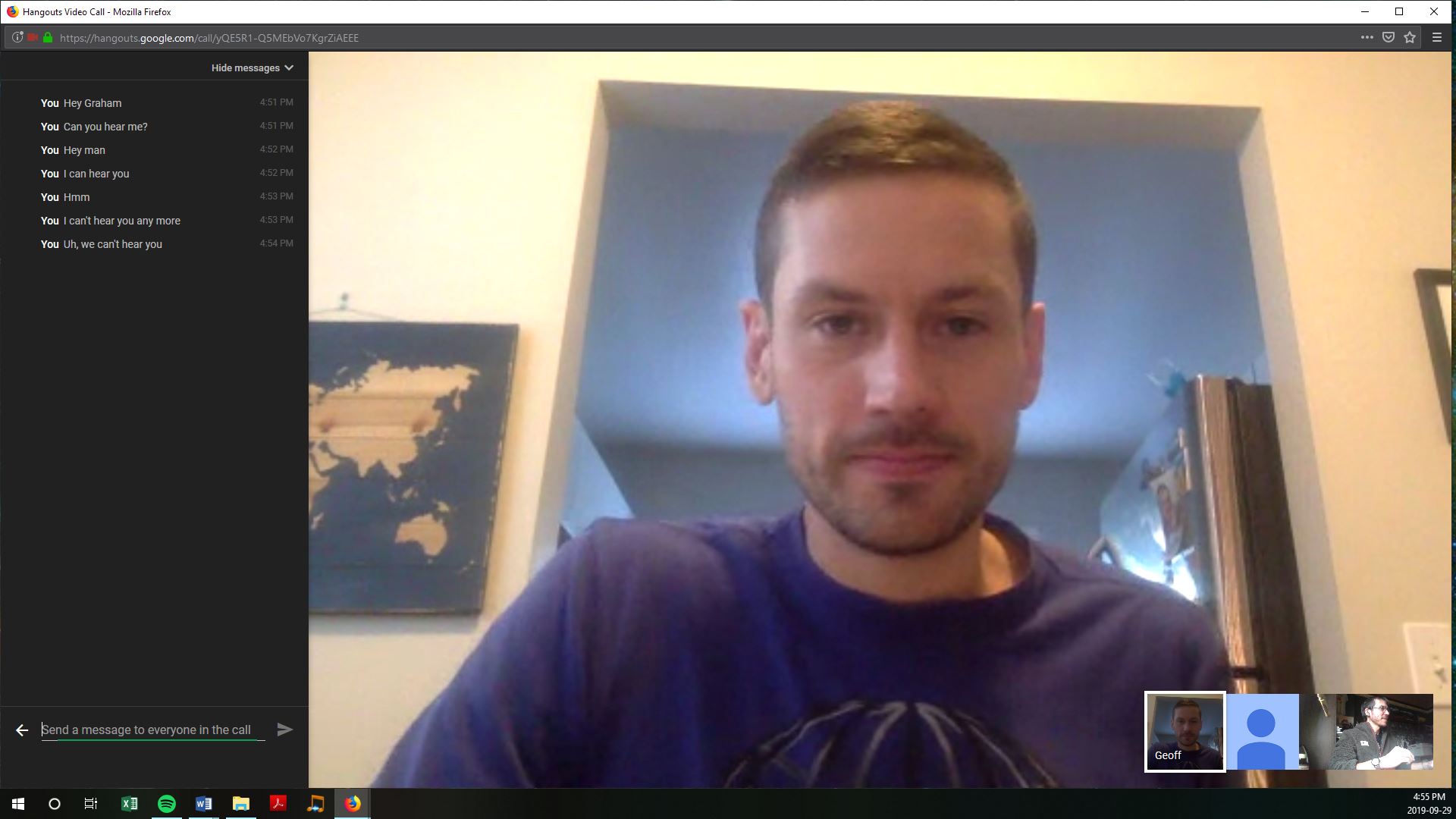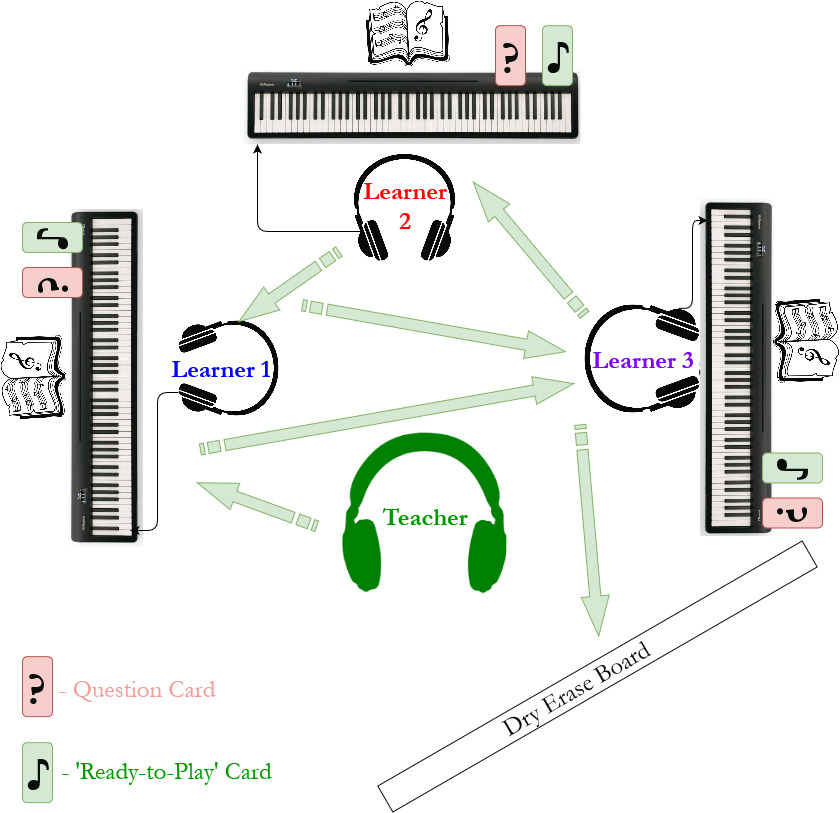In order to get the ball rolling on our EdTech inquiry project, I met with Graham & Geoff via Google Hangouts on Sunday. It was very useful to have all the team members together, sharing thoughts and collaborating on a relatively latency-free platform. I thought I’d take a moment to reflect on some of the pros & cons of the platform after my first use.

Pros:
- free & browser-based: the fact that the platform is browser-based makes it much more convenient. Instead of having to worry about ensuring that everyone has a Skype client installed (and updated), it is very convenient to just use Firefox to access the service.
- low latency: I didn’t find there was much lag or that we were talking over each other
- potential to expand functionality: we were using the Google hangouts online app, although it appears that there is a browser extension as well. This may enhance its usefulness
Cons:
- no whiteboard or media space: as far as I could tell, there is no shared whiteboard or media space. For some reason, I expected there would be some sort of work area where we could sketch or place text or images that everyone could access
- plugins: we had to delay our meeting by about 15 minutes in order to get everybody updated on plugins. As such, it wasn’t as seamless as it could have been
- can’t replace face-to-face: while it was convenient for us to be able to meet remotely, it was not quite the same as an in-person meeting. In terms of engagement and communication, I would place it somewhere between a 3-way call & an in-person meeting
Anyways, that’s just my $0.02 on Google Hangouts. Moving forward, I think I’ll try & use it a few more times. I’m curious about the G Suite and the various tools that exist for long-distance communication and conferencing. I have been thinking lately about a potential project in Socials or Science class where my class pairs up with a ‘sister class’ in a different country in order to collaborate on a project over vast space. Google Hangouts & other tools that are related may help, assuming the students and parents consent to its use.
-S

